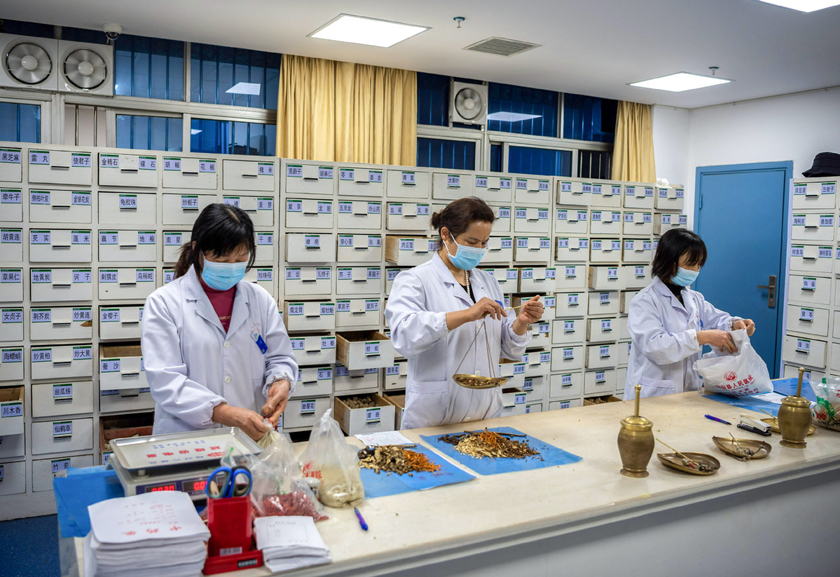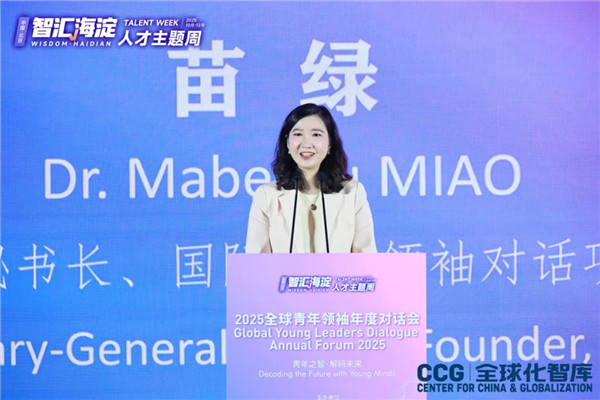Laurence Brahm: Western nations should try TCM against coronavirus
March 12 , 2020
Staff workers at a TCM pharmacy in Yichang in Hubei province, pack Chinese medicine for patients, on March 27, 2020. [Photo/Xinhua]
By Laurence Brahm, a senior international research fellow at CCG
Traditional values and methods often prove effective when applied in modern circumstances. In combating novel coronavirus China adopted a combination of both, using both advanced medical technologies and big data on one hand, and classic methods of organization and response with herbal medicines on the other.
While many Western countries debated the usefulness of quarantine and isolation until too late, when coronavirus outbreaks had already spread infecting large numbers, China succeeded in controlling the coronavirus largely due to its mandatory isolation and quarantine programs coordinated nationwide. Success of implementation lay in both governing apparatus and the effectiveness of a Chinese collective unconscious of cultural traditions involving unity and cooperation in situations like this. This began with overall national acceptance that coronavirus is the single enemy that everyone must fight against.
Now imagine the past. A single enemy is attacking. The gates of the Great Wall are shut. The gates of every walled city are shut. The gates of every village are shut. Amazing? It is traditional collective unconscious that comes from millennium of experience dealing with different kinds of crisis. Hey, it works! So what is the “to quarantine or not to quarantine” Hamlet thing going on in Western countries? What is there to argue about?
In Chinese culture the lotus is a symbol for purity. It rises from the muck of a pond or lake basins and rises well above the water, opening to a spectacular flower whose seeds are in fact a de-toxin with medicinal elements. It symbolizes the benefits of positive aspiration when it rises from the depths of mud.
There is a traditional Chinese medicine called lotus for cleansing epidemics lianhua qingwen that has proved effective in cleaning toxins from coronavirus and has proved to clear lung inflammations and infections. It is said that one of the reasons for controlling the spread of coronavirus in China is the ability to test people early, identify the infection and then use Chinese medicine in the early stages to reduce and reverse it.
Does it sound far fetched? Doctor Zhong Nanshan, who has overseen the national response to the entire coronavirus crisis the same way he did in the SARS crisis in 2003, tested the efficacy of Chinese herbal medicine. Lianhua qingwen was first tested on 284 people and 91.7 percent of the coronavirus patients recovered using this traditional Chinese method. Lianhua qingwen releases the fever and is more effective than Tamiflu, a western medicine that was imported and used during the SARS crisis. Moreover, lianhua qingwen is only one-fifth the cost.
China brought 100,000 cases of lianhua qingwen to Italy and shared its experience in helping Italy’s health authorities fight coronavirus there. Chinese traditional medicine proved useful. China also offered to share its experience with the US in its struggle against coronavirus. While lianhua qingwen was submitted to the FDA in 2005, it still has not been approved. Throughout the coronavirus crisis boxes of lianhua qingwen sent from China to help patients who are friends and relatives cannot be delivered, being stopped at customs. The FDA is still testing lianhua qingwen. If it works without side effects, why not use it?
FDA does not recognize many holistic paths toward good health. It is time for us to rise above these narrower approaches and look at science more holistically. In China’s fight against coronavirus, modern technology, including 5G and big data, were harnessed in the fight. At the same time these very traditional methods were also used. Both have value. Both can work. Why limit one’s tools when trying to achieve an outcome?
With coronavirus spreading globally, and medical systems in many countries creaking if not breaking under the weight of this spread, it is not surprising that many are turning to preventive medicine. This is where Chinese traditional medicine offers lessons for the world.
Washing hands is important. However, coronavirus is airborne. It is equally important to wash one’s throat, nostrils, gargle, and exercise, keeping breath and blood circulation fluid. Qigong, tai chi and kung fu practice also can help. This is where ancient knowledge comes in handy today.
In 527, the Zen master Bodhidharma arrived at the Shaolin monastery from India. He was invited to China during a pestilence to bring the epidemic under control, introducing breathing and movement known today as kung fu. Blood, breath and qi circulation are key, together with switching the mind’s frequency from negative to positive. Frankly, we need this today.
There is too much negative energy being released by certain foreign politicians these days that are using coronavirus for their own political leveraging in dividing people against each other rather than unifying them in the battle against coronavirus. We can all learn from this. When they start teaching tai chi at the White House, maybe there can be some positive change there. Rebalancing negative energies with positive in finding balance is at the core of traditional medical practices in China. Unity against a common threat is also a traditional value.
Positive energy can overcome negative energy, if applied with the right intention, a core concept in both Taoism and Buddhism. Concepts of fluidity and circulation are deeply embedded in the Chinese medicinal system. Despite all of our modern technology, there is much to still be learned from traditional knowledge. The coronavirus crisis reminds us we need both.
About Author

Laurence Brahm, a senior international research fellow at Center for China and Globalization(CCG) and founding director of the Himalayan Consensus, and author of Zhu Rongji and the Transformation of Modern China.
Topical News See more






